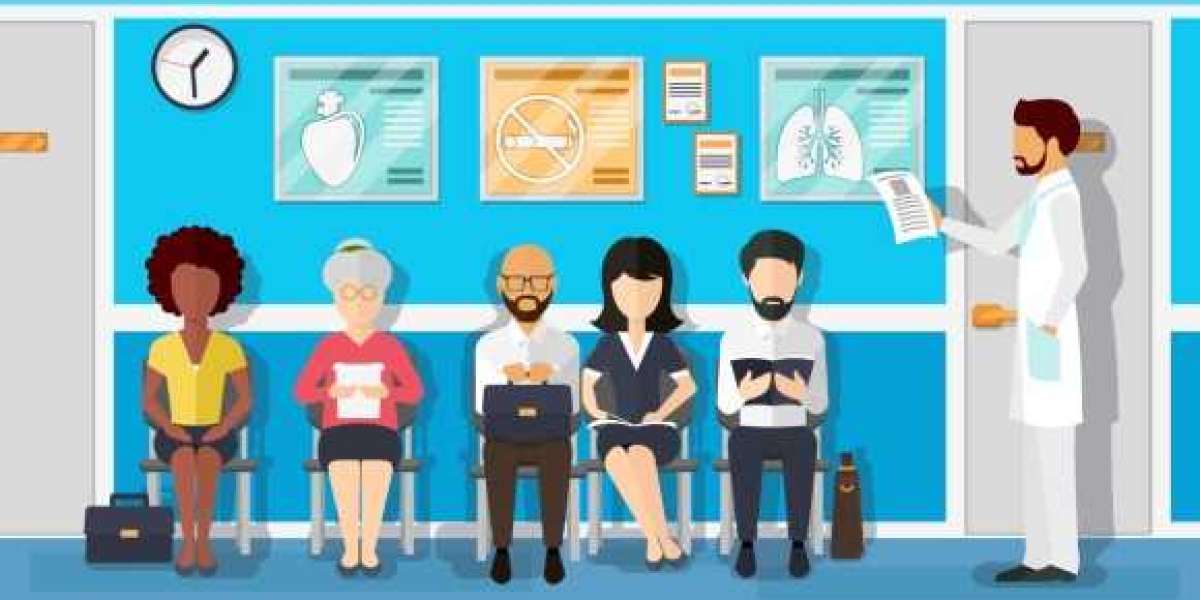Health disparities are everywhere, even though we’d like to think healthcare is fair and equal. But let’s be honest, it’s not. Where you live, how much money you make, or even the language you speak can decide the kind of care you get. And that’s a problem. A big one.
So, what do we do about it? We start with training. Real, practical training for health and social care professionals. It starts with understanding people’s cultures, their struggles, and their unique needs. Because when healthcare workers are prepared to meet people where they are, amazing things can happen.
In this blog, we’ll explore how the right training can make all the difference, like how it can break down barriers, build trust, and create a system where everyone gets the care they deserve.
What are Health Disparities?
Health disparities are differences in health outcomes and access to healthcare services between groups of people. It’s the reality that some groups,because of where they live, how much they earn, or even the colour of their skin,face bigger health challenges than others. And it’s not fair.Think of a rural community with no hospital nearby, a family that can’t afford to see a doctor, or someone who doesn’t speak the local language, struggling to explain their symptoms.
Health disparities show up in higher rates of chronic illnesses like diabetes, worse outcomes for preventable diseases, and even shorter life spans. It’s not always about choices people make. Often, it’s about the resources and opportunities they don’t have.
4 Hidden Barriers to Quality Healthcare
1. Living Too Far Away
Living in a rural region is difficult, as clinics and hospitals may be many hours away. In addition, what if you lack trustworthy transportation? In cities, the situation is different. Many hospitals are overcrowded and have long wait periods, making it seem impossible to see a doctor.
2. Healthcare Costs
Health care can be costly. There are hidden costs even in areas with public health coverage. Transportation, medication, doctor visits, and even taking time off work to receive treatment. Everything adds up. Some have to decide between maintaining the lights and paying for care.
3. Language and Cultural Gaps
Imagine attempting to describe your symptoms to a doctor who doesn't appear to understand you or, worse, doesn't speak your language. This occurs more frequently than you might imagine. Patients may feel disregarded, misinterpreted, or even condemned as a result of a lack of cultural knowledge.
4. Not Knowing Where to Start
Many people find navigating the healthcare system to be overwhelming. Even so, what does that diagnosis mean? How can one locate the ideal specialist? It's similar to attempting to piece together a puzzle with missing pieces for people with limited health literacy.
How Training Can Bridge the Gap in Health Inequalities
1. Building Cultural Competence
- Healthcare professionals who receive training are more able to understand and respect various cultural customs, values, and beliefs.
- In addition to lowering obstacles like misunderstandings or fear of being judged, this increases trust with patients.
2. Improving Health Literacy
- Professionals are trained to speak in straightforward terms that all patients understand.
- This ensures that patients understand how to adhere to treatment regimens and get the attention they require.
3. Focusing on Community-Based Care
- Training draws attention to the particular difficulties experienced by marginalized groups, such as those living in low-income regions or rural locations.
- To increase access, providers might create focused solutions like telemedicine services or mobile health clinics.
4. Leveraging Technology
- Healthcare professionals acquire the skills necessary to efficiently use resources like telehealth platforms and electronic health records (EHRs).
- These tools reach patients in difficult-to-reach places, increase efficiency, and improve care coordination.
Why Cultural Competency is a Game-Changer in Healthcare
Being culturally competent involves being aware of and considerate of a patient's history, values, and requirements. Making a connection with patients that makes them feel heard and appreciated is more important than simply being kind.
There may be serious issues if medical professionals are unaware of cultural differences. If patients feel judged, they may withhold crucial information. Misdiagnosis might result from language problems. Simple things like disregarding food choices can reduce the effectiveness of therapy.
Patients, however, have greater faith in caregivers who are culturally competent. They feel more at ease, follow treatment regimens, and communicate honestly. Better outcomes and improved communication follow from this.
Additionally, it helps providers steer clear of errors and misunderstandings that cost them time and money.
Real-World Solutions: What Effective Health and Social Care Training Looks Like
1. Role-Playing and Real-Life Scenarios
Trainees are not just seated in a classroom. They take on real-world challenges, such as overcoming linguistic obstacles or appreciating cultural variance. It is useful. It is chaotic. But, it gets students ready for the challenges they will encounter on the work every day.
2. Technology That’s Actually Useful
Electronic health records (EHRs), wearable technology, and telehealth are more than simply catchphrases. Professionals are trained to use these tools to provide treatment in a more efficient, intelligent, and accessible manner. Since technology is here to stay.
3. Learning Empathy
Empathy might sound soft, but it’s a game-changer. Training focuses on how to really listen to patients, understand their concerns, and make them feel heard. Because when patients trust you, outcomes get better.
4. Hands-On Community Work
Sometimes, the best training happens outside the classroom. Like running a health workshop in a low-income neighbourhood or working at a mobile clinic in a rural area. These experiences stick with trainees and teach them what patients really need.
5. Never Stop Learning
Good training doesn’t end with a certificate. Professionals keep learning—through workshops, online courses, or team discussions. Healthcare is always changing, and staying up to date isn’t just important—it’s necessary.
The Future of Healthcare: Creating Equity Through Education
The future of healthcare is about people. It’s about making sure everyone gets the care they deserve, no matter where they’re from or what challenges they face. And education? That’s where it all starts.
Imagine training programs that do more than teach facts. Programs that use virtual reality to let trainees practise tough situations in a safe space. Or AI-powered tools that personalise lessons based on what someone struggles with most. Sounds futuristic, right? But it’s happening. These tools aren’t just cool—they’re preparing healthcare workers to tackle real-world problems with confidence.
But let’s not forget the human side. Technology can’t replace the need for empathy and cultural understanding. Training will need to focus on helping professionals connect with patients, really listen to them, and respect their unique needs. Because patients aren’t just cases—they’re people with stories, fears, and hopes.
And here’s the thing: learning never stops. The best healthcare systems of the future will make ongoing education a priority. Workshops, online courses, even peer learning—all designed to keep skills sharp and knowledge up-to-date.
Education is about creating equity. Breaking down barriers. Making healthcare truly accessible for everyone. Because when we train healthcare workers to do more than just treat symptoms, we build a system that cares for the whole person. And isn’t that what we all want?
FAQ
What Are Health and Health Care Disparities?
The term "health and healthcare disparities" describes how various groups of people differ in their access to healthcare services and health outcomes. Factors such as gender, race, money, education, and location are frequently the cause of these disparities. People in low-income neighbourhoods, for instance, can have fewer access points to preventative treatment or experience greater rates of chronic illnesses. Healthcare disparities highlight differences in the accessibility, calibre, or cost of healthcare services, whereas health disparities place more emphasis on differences in health outcomes.
What Are Social Inequalities in Health and Social Care?
Social disparities in health and social care occur when certain groups are less well-off or have less access to care because of environmental, social, or economic causes. Many times, these disparities are linked to systemic problems like discrimination, poverty, or illiteracy. In rural areas, for instance, there may be fewer healthcare facilities, and members of minority communities may have language challenges while trying to obtain services. Fair chances for all populations to attain excellent health and obtain high-quality care must be established in order to address these disparities.
Are Health Disparities Caused by Social Determinants of Health?
Yes, one of the main causes of health disparities is socioeconomic determinants of health. Social determinants encompass elements such as employment, housing, education, income, and access to nutritious food. Living in a neighbourhood without grocery stores, for example, may make it difficult for residents to maintain a balanced diet, increasing their risk of developing chronic illnesses. In a similar vein, people may be unable to attend doctor's visits due to a lack of transportation. Reducing health disparities and improving outcomes for disadvantaged populations can be achieved by addressing these variables.
What Are Disparities?
Differences or discrepancies in conditions, opportunities, or results between groups are known as disparities. Disparities are differences in health outcomes, access to services, or the standard of treatment that various populations experience in the context of health and social care. These disparities, which have their roots in systemic obstacles like socioeconomic status, racism, or geographic restrictions, are frequently unjust and preventable. In order to address inequities, mechanisms that support equality and guarantee that everyone has an equal opportunity to attain optimal health must be established.
Conclusion
Disparities in health exist everywhere, don't they? The idea that something as important as healthcare could be influenced by one's residence, income, or even language is discouraging. However, that is the reality. It's not acceptable and it's not fair.
What is the answer, then? Instruction. actual instruction. Educating social workers and health care providers on how to meet people where they are. They should respect their cultures, be aware of their hardships, and—above all—treat them like people, not just cases. Because everything changes when medical professionals truly connect with patients and understand them.








